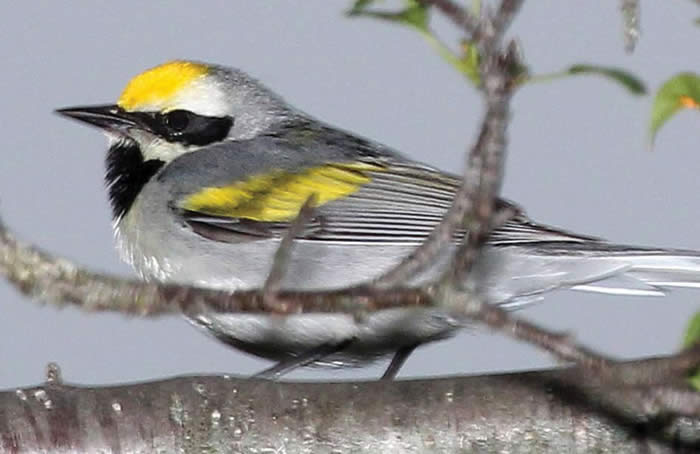 For the golden-winged warbler at risk
For the golden-winged warbler at risk
As we hike through the Poconos, let's give a thought to this imperiled bird and a nod to the landowners who make a point to provide habitat
By Carol Hillestad
March and April have been unusual this year in the Poconos – to say the least! In the last few days, though, I’ve heard wood frogs quacking, seen dozens of bustling robins digging for worms, and found a woodcock right at my feet. Spring is finally starting to roll.
Today, I’m hiking on private land. My goal is a messy tangle of shrubs in open woodland, where tiny golden-winged warblers will nest in May.
The trail is often steep, but wide and grassy. I see lots of coyote scat and a pair of red-tailed hawks swooping and diving above the forest. Steep rock escarpments and scattered boulders covered with lichen and evergreen ferns stand out in still-leafless woods.
Where the trail dips, a streak of water rises among mossy green rocks and heads downhill toward Paradise Creek. This forested, high ground between the Paradise to the west and the Brodhead to the east protects the water of both. Rain and snowmelt slowly soak into the ground here, eventually reaching the creeks, keeping them running even during times of drought.
 The owners of this land care about keeping drinking water pure and plentiful — and about the survival of the imperiled golden-winged warbler, a tiny bird that looks a bit like a chickadee dressed for a party. A black bib and eye-mask are set off by a bright gold cap and wing bars, against soft blue-grey plumage.
The owners of this land care about keeping drinking water pure and plentiful — and about the survival of the imperiled golden-winged warbler, a tiny bird that looks a bit like a chickadee dressed for a party. A black bib and eye-mask are set off by a bright gold cap and wing bars, against soft blue-grey plumage.
This beautiful bird, once common in the northeast, has been in steep decline. Golden-wings need a patchwork of scrubby, low vegetation for nesting and raising young, combined with mature forest and dense thickets for food and cover.
Fires and beaver activity used to provide these conditions naturally. As humans controlled both fires and beavers, golden-wing habitat disappeared. Today, the birds desperately need a helping hand.
With advice from a consulting forester and a team of experts from the Golden-Winged Warbler Working Group, the landowners culled trees to open the forest. Oak stumps have been allowed to regrow as brushy shrubs. The culled logs lie every which way. To my eye, this messy tangle may not be appealing. To the golden-winged warblers returning from Latin America, it looks like home.
A treat for humans lies just ahead, however. The trail circles around the managed woodland, tracking steeply uphill. The mixed hardwood forest starts to thin. A tumbled line of rock rises abruptly, creating a flat tableland above. Here, a red-rock barren of pitch pine, reindeer moss, and scrub oaks crowns the peak. The sky opens in all directions: from Skytop Mountain far to the north, sweeping over ridges and valleys around to Delaware Water Gap, then back along Camelback to the Knob in Mount Pocono, then Cresco Heights and Spruce Mountain. It’s a piercing exhilaration of a view.
With so much to think about, the return walk down seems easy and quick. How different these woods will be for our hike on May 5, leafing out and alive with birds! Please join me and the experts on golden-winged warblers who will lead this exploration.
Carol Hillestad is a hike leader and writer for Get Outdoors Poconos, a grant-funded series administered by Brodhead Watershed Association.
Photos and video by Carol Hillestad
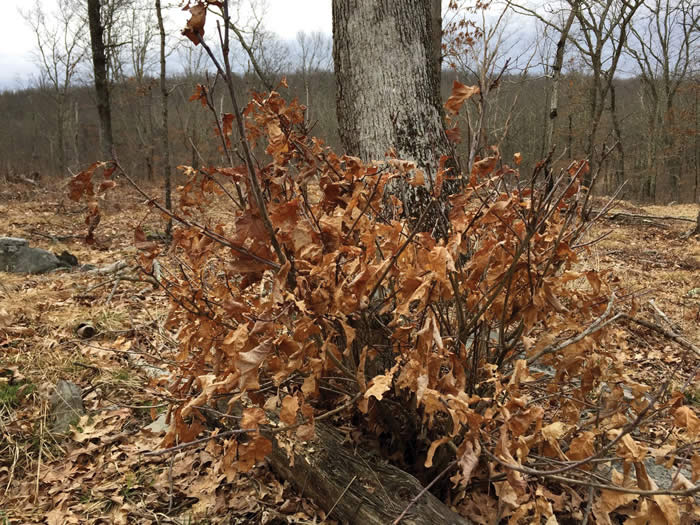 |
|
| This brushy re-growth of oak doesn’t look like much — but it is the kind of nesting site golden-winged warblers need. |
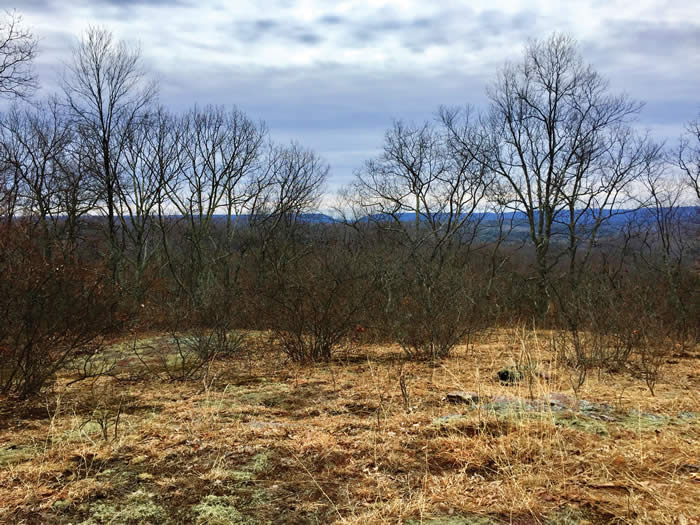 |
||
| An icon of the Poconos, Delaware Water Gap is clearly seen from a ridge between Brodhead Creek and Paradise Creek. |
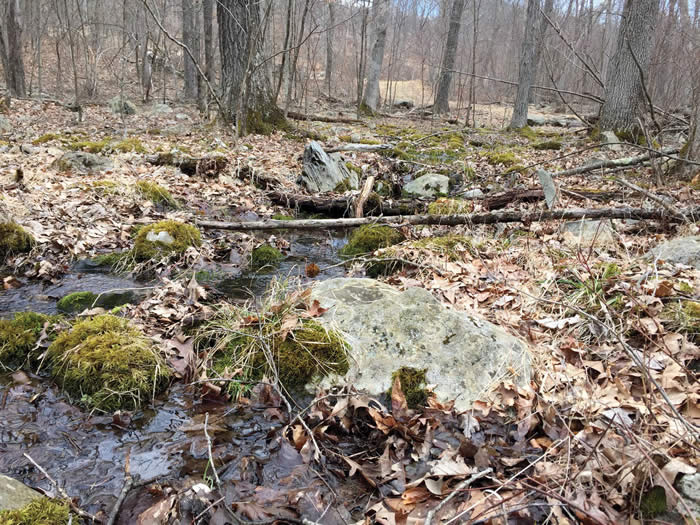 |
|
| Rocky wetlands are a feature on the way to the golden-winged warbler habitat. |
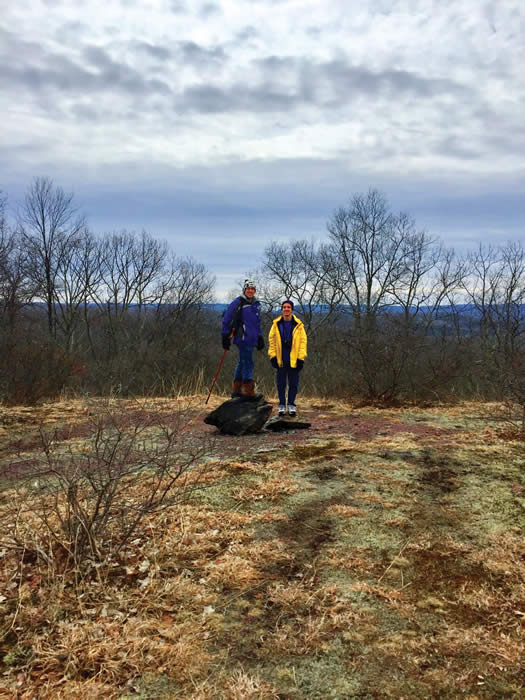
Mapmaker Ambrose Cavalier and his father, Forrest Cavalier, explore a red-rock barren on the ridge. |
Comments from other hikers:
Be the first to comment!
Share your experiences of this trail -- what you saw, how you liked it:
